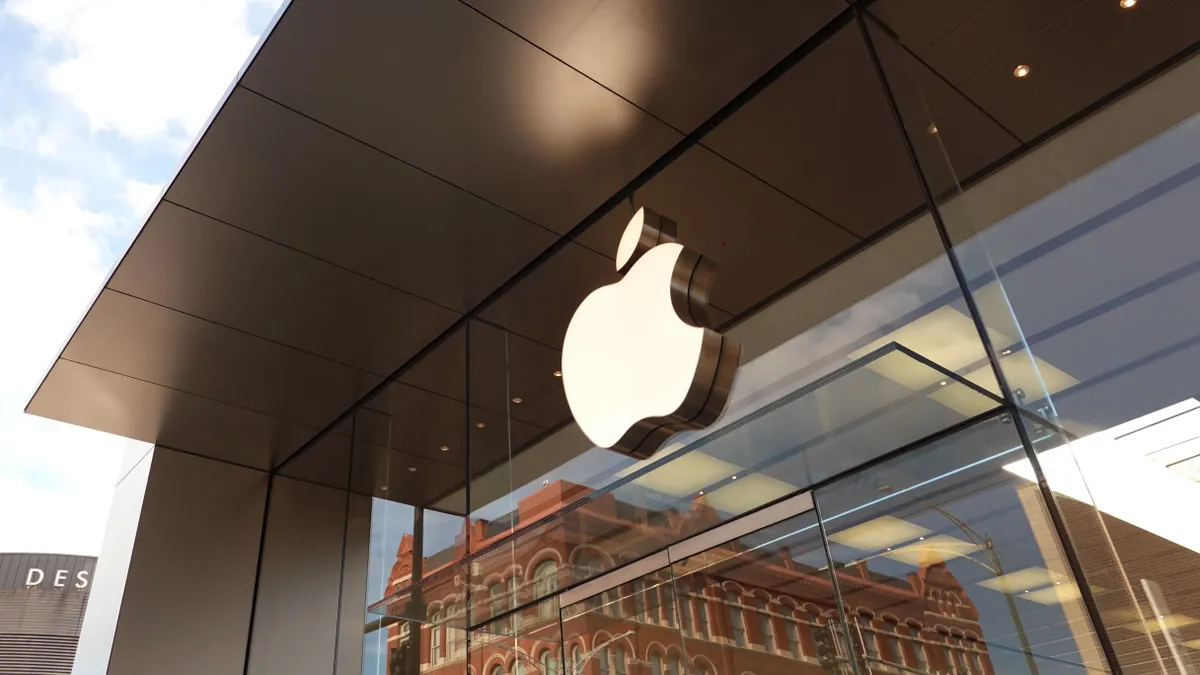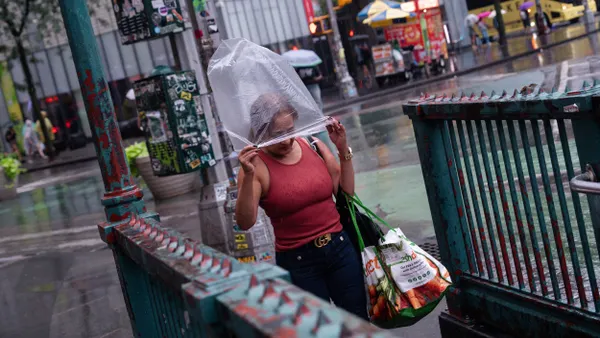Dive Brief:
- Apple reported Wednesday it has made major strides in reducing its carbon footprint and surpassed a 60% reduction in its global greenhouse gas emissions — scope 1, 2 and 3 — against a 2015 baseline. The company said this advancement did not include carbon offsets.
- The tech giant also shared updates on other environmental fronts, including an increased use of recycled content in its products. The company said 24% of materials shipped in its products came from recycled or renewable sources in 2024, and its MacBook enclosures or cases now comprise 100% recycled aluminum that, according to its latest Environmental Progress Report, can be recycled repeatedly.
- The progress builds towards Apple’s goal of achieving carbon neutrality by 2030. The company said reaching this goal would require cutting emissions by 75% by the end of the decade, compared to 2015 levels. This decarbonization target does not include any carbon credits Apple plans to use to offset the remaining emissions.
Dive Insight:
The iPhone maker also shared other sustainability milestones in the April 16 report, including that the company used 99% recycled rare earth elements in all magnets produced and 99% recycled cobalt in all batteries it designed.
Apple said its efforts to curb its carbon footprint helped it avoid around 41 million metric tons of greenhouse emissions last year. Such efforts included product redesign, increased recycled content use and a program to shift its supply chain to renewable electricity.
The Supplier Clean Energy Program, which helps suppliers transition to renewable electricity by advocating for policy changes and boosting renewable energy procurement access, was alone responsible for helping the tech giant avoid 21.8 million metric tons of emissions in 2024, according to the report. Apple’s suppliers procured 17.8 gigawatts of renewable energy and generated 31.3 million megawatt-hours of clean energy last year.
Apple Vice President of Environment, Policy, and Social Initiatives Lisa Jackson said the progress being made toward the company’s 2030 climate goal “touches every part of [the] business.”
“Today, we’re using more clean energy and recycled materials to make our products than ever before, we’re preserving water and preventing waste around the world, and we’re investing big in nature,” Jackson said in an April 16 release. However, she noted “the work gets even harder” as 2030 draws closer.
To successfully achieve its end-of-decade target, Apple said it would support policies that fast-track decarbonization of the transportation sector. This includes developing and adopting non-fossil, low-carbon or zero-carbon alternatives for aviation, ground transportation and maritime shipping.
As part of this strategy, the consumer electronics and software company will ship at least 50% or more of its recently launched “carbon neutral” Mac minis — designed with over 50% recycled content and made with 100% renewable electricity — through low-carbon methods such as ocean freight.
Apple reported 65% revenue growth in the same time span as the emissions cuts, up from the 64% revenue growth it reported in its environmental progress report last year.
Prior to the release of its 2023 environmental report, the tech company said it would increase global investments in clean energy and clean water. At the time, Apple said it would match every watt of electricity used by customers for charging its products with clean energy by 2030.











